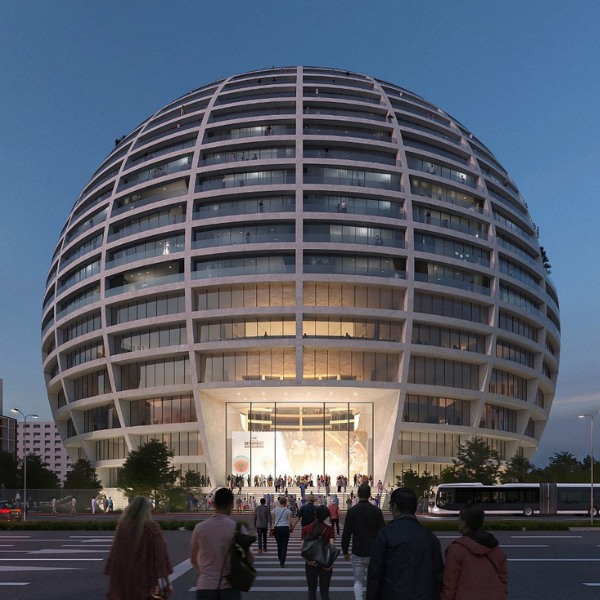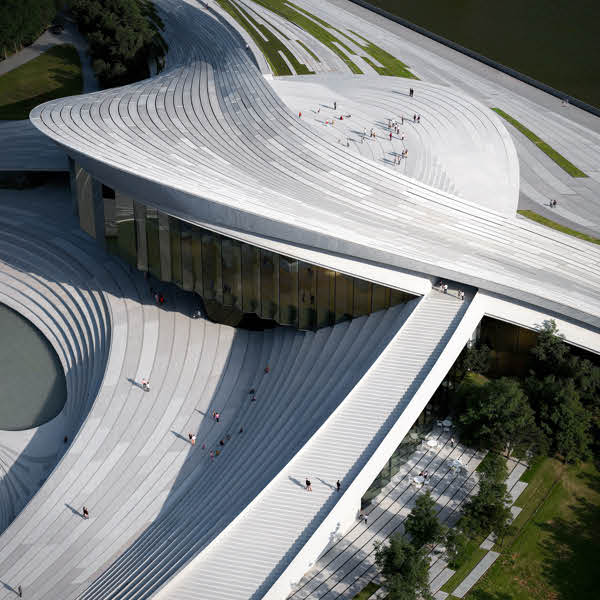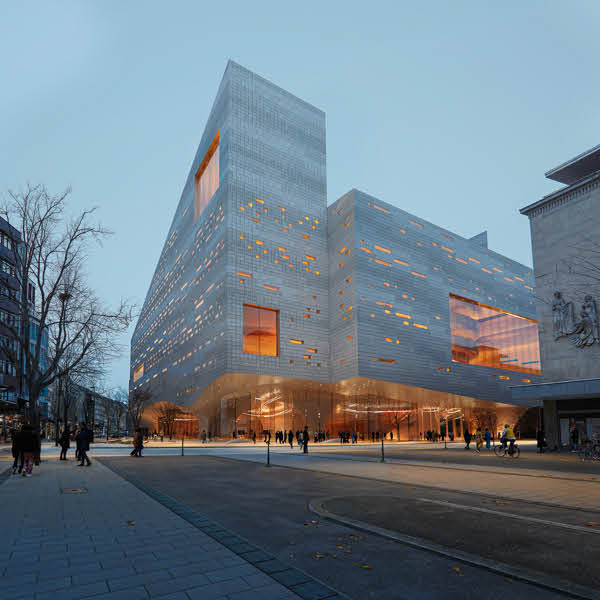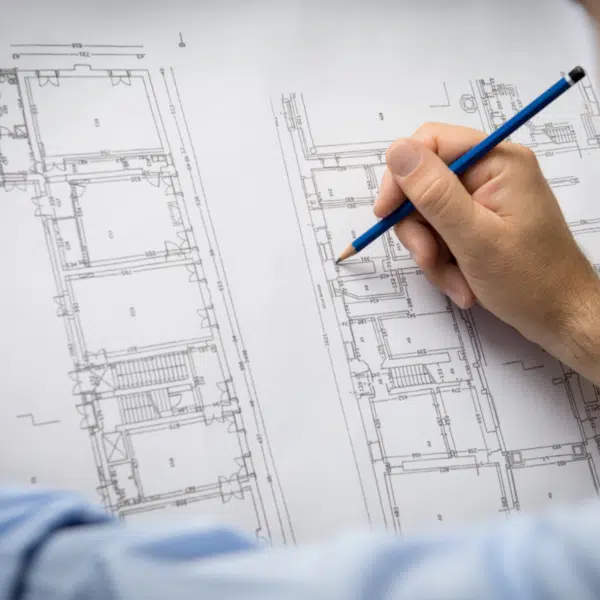
Left: Stock Photos from Tinnaporn/Shutterstock | Right: New York World-Telegram and the Sun staff photographer: Al Ravenna [Public domain], via Wikimedia Commons
A trip to New York City isn’t complete without a visit to one of its most famous locales, the Guggenheim Museum. For the past 60 years, the institution has “collected, preserved, and interpreted” modern and contemporary art that crosses cultures and platforms while engaging audiences in New York City and beyond. During its time in Manhattan, the museum has mostly been housed in a structure whose reputation precedes the art you’ll find inside. The Guggenheim building was designed by renowned and celebrated architect Frank Lloyd Wright and is widely considered his best (and certainly most memorable) work.
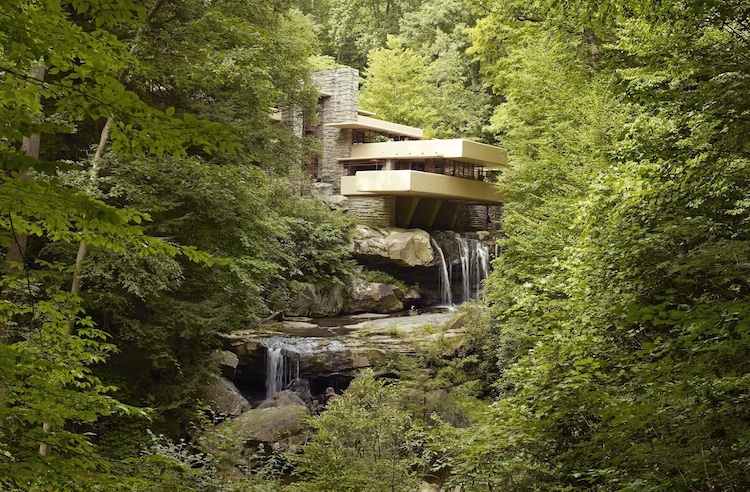
Fallingwater, 1935
Photo: Carol M. Highsmith via Wikimedia Commons Public Domain)
Wright was commissioned to design the institution in 1939—well into his career. At this point, he had spent from 1905 to 1908 constructing the Unity Temple in Oak Park, Illinois. Its use of reinforced concrete earned it the reputation of being one of the first modern buildings in the world. Wright had also completed Fallingwater in 1935, a house located in rural Pennsylvania that is partially situated over a waterfall. The acclaim from it earned the site a designation as a National Historic Landmark.
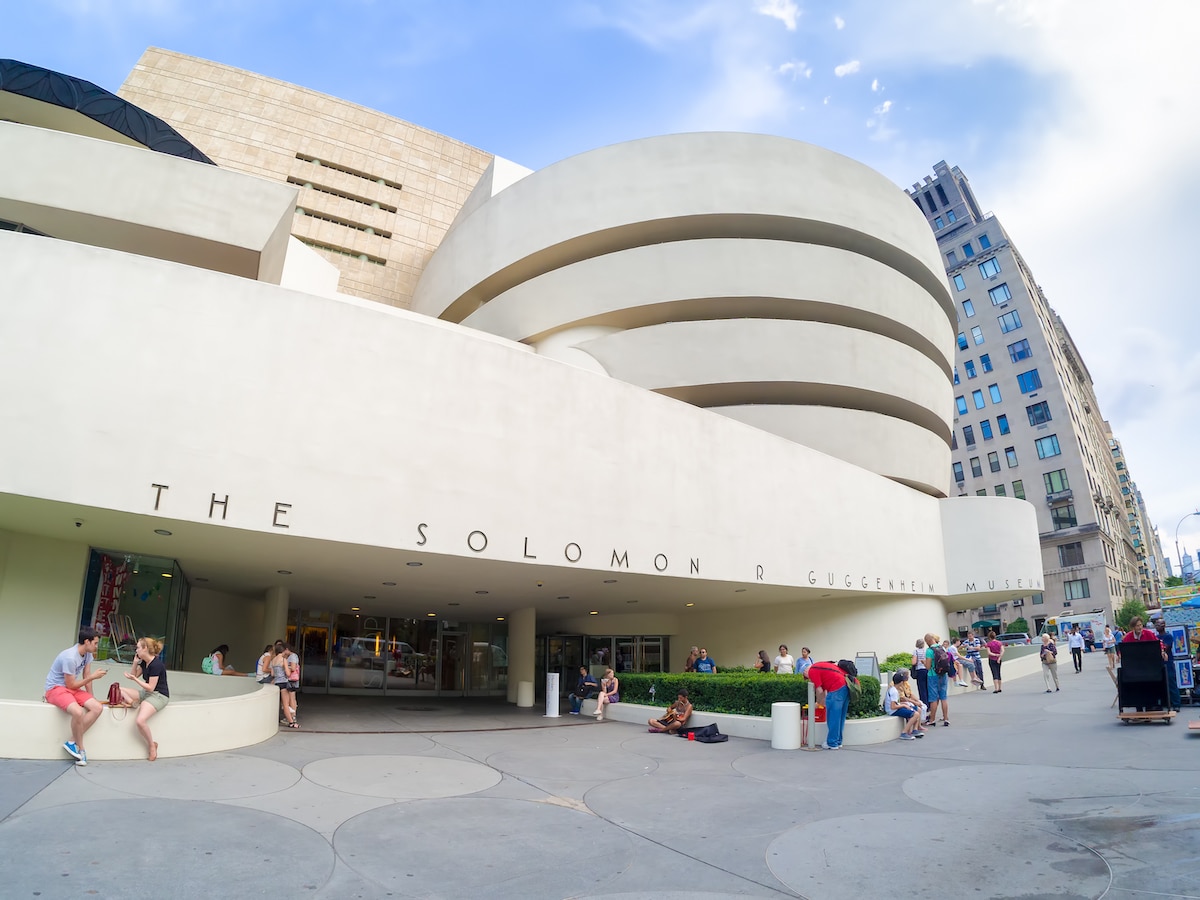
Stock Photos from Kamira/Shutterstock
It took 15 years for the Guggenheim building to be complete, but the challenges were ultimately worth it as the design is considered to be Wright’s greatest masterpiece.
History Behind the Guggenheim Museum
The Guggenheim Museum was established by philanthropist Solomon R. Guggenheim. He had a collection of abstract paintings from American and European artists that were housed in a rented space and called the Museum of Non-Objective Painting. It was clear, however, that there was a need for a permanent location. Guggenheim, along with his museum director Hilla Rebay, commissioned Wright for the job.
On June 1, 1943, Rebay wrote a letter to Wright asking if he’d design a space to display Guggenheim’s collection. “I need a fighter, a lover of space,” she said, “an originator, a tester, and a wise man.” Of the structure, she added, “I want a temple of spirit, a monument.” There were little requirements for Wright, but the institution's co-founders had a big stipulation. “The building should be unlike any other museum in the world.”
Why is the Guggenheim Museum iconic?
Guggenheim and Rebay asked a lot of Wright, and he was up for the task. His portfolio showed that he could design outside the box, and his philosophy for architecture was equally as forward-thinking. He believed that a building should not be constrained by “preconceptions or historical styles.”
Wright articulated his vision of what a museum ought to contain, and it wasn’t pillars or lots of concrete (although an important material for Wright). His ideas were more abstract than that. “A museum should have, above all, a clear atmosphere of light and sympathetic surface,” he explained in a letter to Rebay in 1944. “A museum should be one extended, expansive, well-proportioned floor space from bottom to top, a great calm and breath pervading the whole place. The whole thing will either throw you off your guard entirely or be just about what you’ve been dreaming about.”
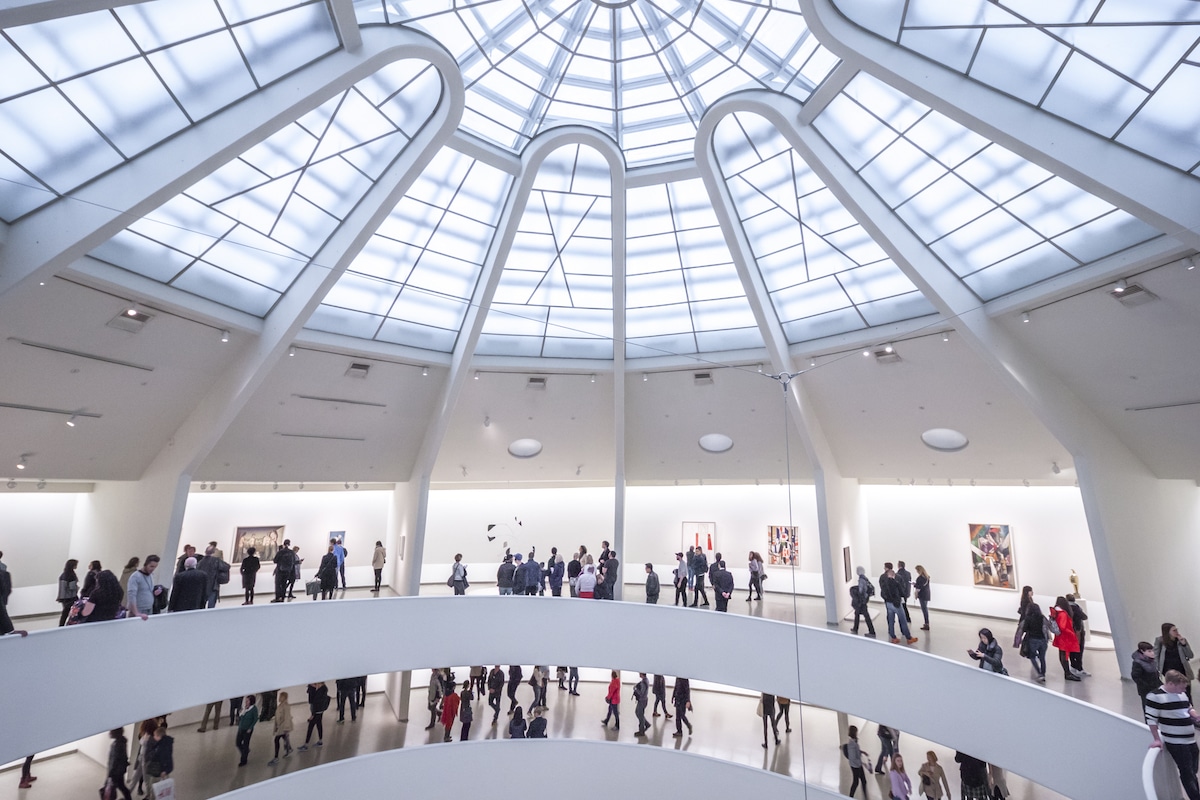
Stock Photos from ItzaVU/Shutterstock
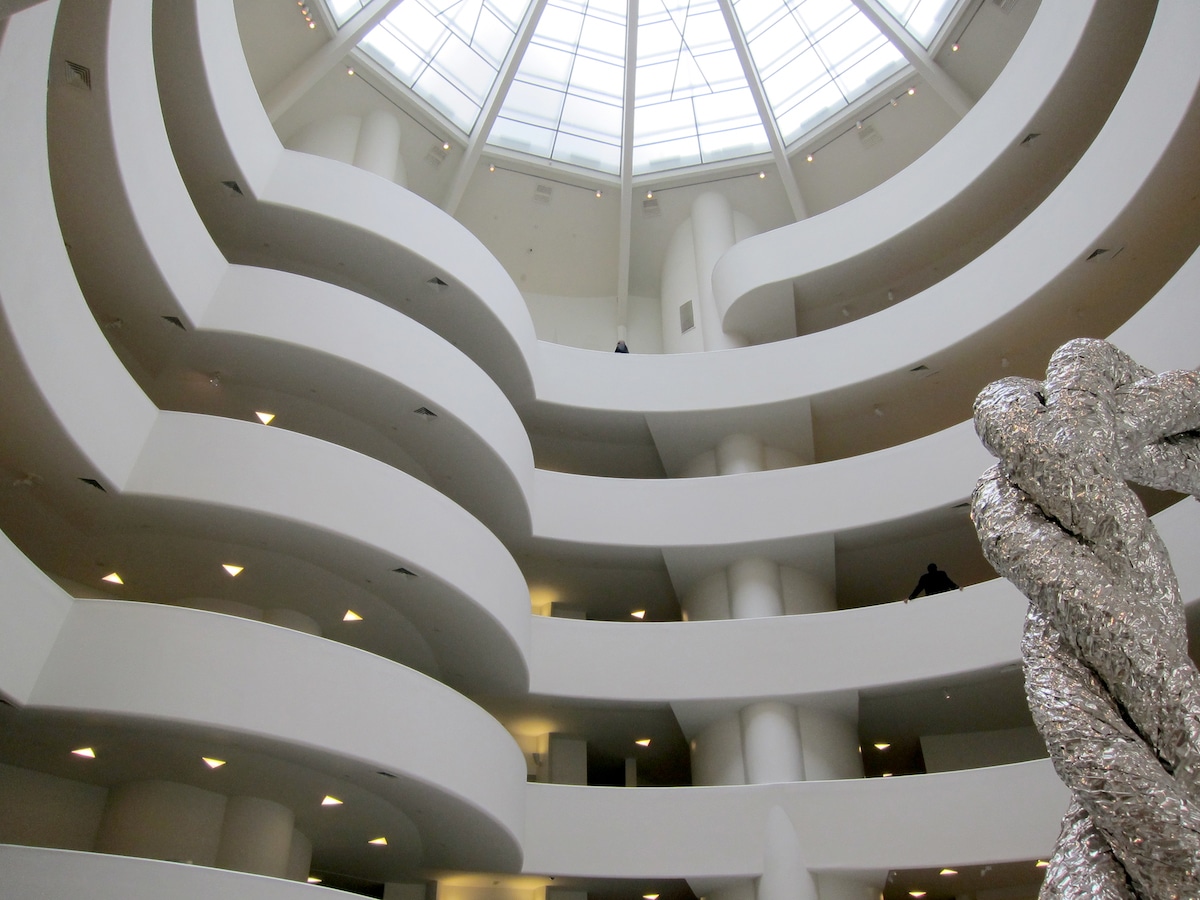
Evan-Amos [Public domain], via Wikimedia Commons











































































